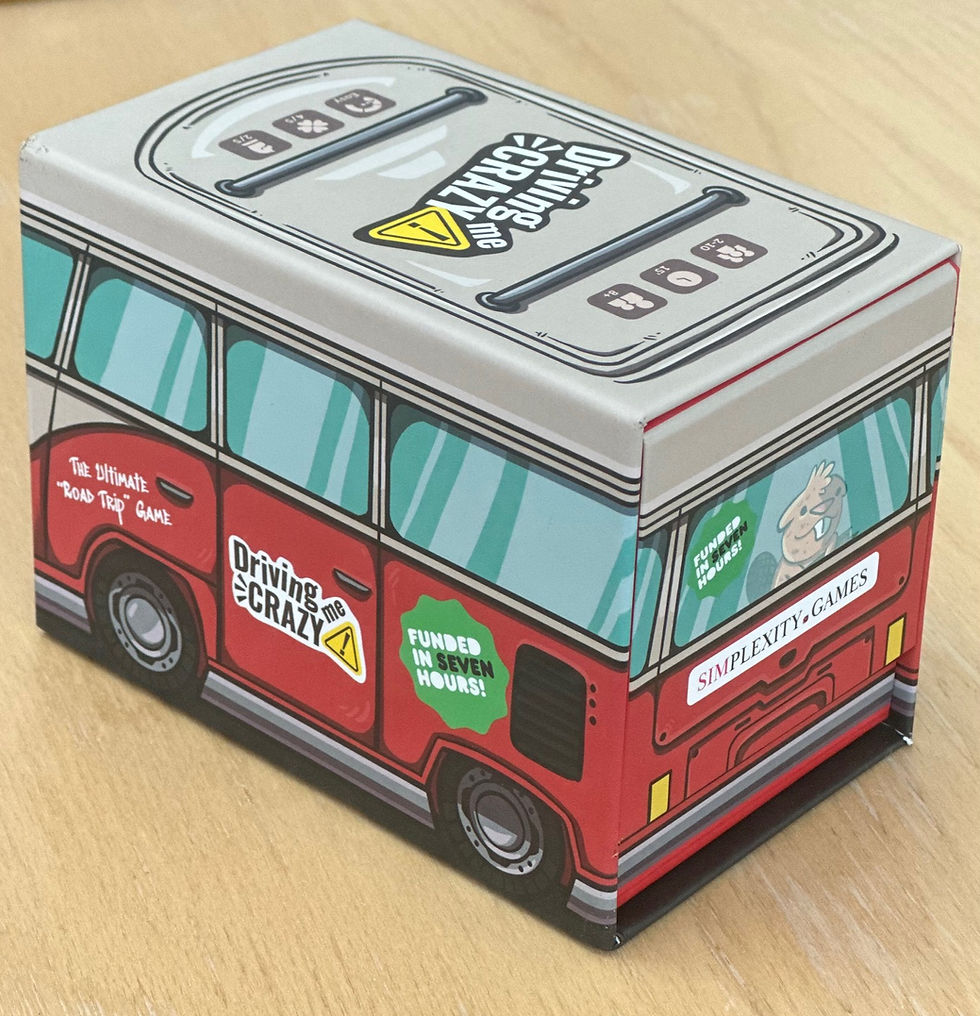Chameleon
- Board's Eye View

- Dec 20, 2017
- 3 min read
Updated: Mar 13, 2020
Hidden identity/social deduction games have become a popular staple. They are often described as party games but many require too great an investment of set-up, playing time or concentration to be truly placed in the ‘party’ class. Werewolf (Bezier et al) and more recent games like Salem 1692 (Façade) and Secret Hitler (Goat Wolf & Cabbage) – both previously featured on Board’s Eye View – are very good games, and they are easy to play, but they are hardly ‘casual’ games that can readily be broken out for party play.

Spyfall (Cryptozoic / Hobby World) was a recent exception. In that game, players have a list of locations (airplane, hospital, space station and suchlike). Players each have a card that tells me the specific location they are all at, but one player’s card just tells them that they are the spy. Players then direct questions at each other so that the questions and the answers give an indication that they know the location. The spy is trying to deduce the location; the other players are trying to deduce who is the spy. This all means that questions and answers have to be fairly cryptic (if they are too obvious then the spy will easily determine the location) but not so generic that the other players suspect them of being the spy. This game has proved popular with experienced games players but relative newcomers often find it difficult to get the balance right in framing their questions and the answers they give to others. It also didn’t help that the game came with no player aids listing the possible locations, making it doubly difficult for new players to join in. Though the publishers have produced a Spyfall 2 expansion/sequel game, with a bunch of new locations, the limitations of the original game remain.

This is where Big Potato’s game Chameleon comes in. The game is a revision of the game Gooseberry (La Mame). In Chameleon, all players have sight of a grid of 16 words related to a particular topic or theme. They are each dealt a card that gives a grid reference, except that one player’s card just says: “you are the chameleon”. Dice are rolled to indicate an individual grid reference so that all the players except the chameleon know the specific target word. Players all then say one word that has sufficient connection to that specific word to show they know it while not being so obvious that it identifies the word for the chameleon. The chameleon has to try to blend in so that they are not identified. Once everyone has said their one word, the players point to the player they think is the chameleon. If the majority point to someone other than the chameleon, the chameleon wins. If a majority point to the chameleon, the chameleon still wins if he correctly identifies the target word. As you can see, this game has a lot of similarities with Spyfall.
Chameleon plays very quickly. It is easily taught and learnt, and requires no set-up. It is much more accessible than Spyfall to “non-gamers” because all the players have equal access to the grid showing the 16 possible target words. Of course, the game isn’t flawless. You really need all players to have determined the word they are going to say before hearing each other’s words. If there is any delay going round the table, then the chameleon may be able to take advantage of it and change their word to take account of what a previous player has said. This also means that turn order can affect play: where players do allow a gap between stating their words, the chameleon is at a marked disadvantage if it happens that they are the first to go. It makes it a bit less of a party game, but you can round these shortcomings by requiring players to write down their words before any are said out loud.
The designers have considered the possibility that players might consciously or otherwise 'learn’ some of the grid references that correspond to particular rolls, so the game comes with two different sets of grid cards. Though there is a good range of category cards supplied with the game, the makers have helpfully also included a whiteboard card and marker pen so that players can personalise the game and come up with their own categories and word grids. This adds further to Chameleon’s replayability.
The one caveat over recommending this as a party game is the risk that the grid/chameleon cards could get bent or marked while they are handled by the players. A bend or crease on a card could make it identifiable and so render the game unplayable. It’s just a pity that the cards that are dealt out to players don’t come in a more readily sleevable size.




